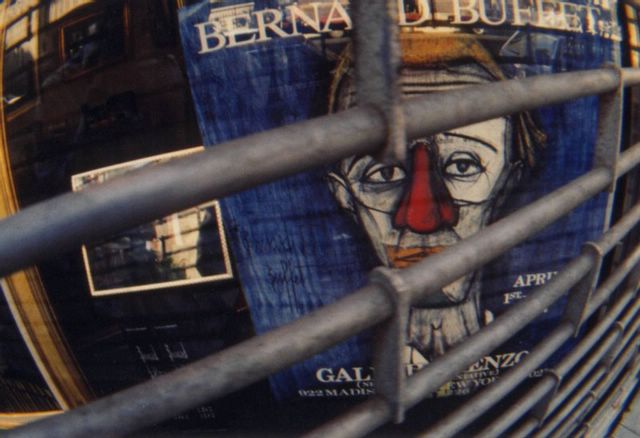Stanley Kubrick never threw anything away. On the other hand, he didn’t have much of a filing system, and when he moved — permanently, it turned out — from Hollywood to London in 1962, a great many things went astray. Among them was the sole copy of a film treatment called “Lunatic at Large,” which Mr. Kubrick had commissioned in the late ’50s from the noir pulp novelist Jim Thompson, with whom he had worked on “The Killing,” a 1956 bank-heist story that became his first successful feature, and then on 1957’s “Paths of Glory.”Mmm... Midget Monkey Girl...
The manuscript remained lost until after Mr. Kubrick’s death, in 1999, when his son-in-law, Philip Hobbs, working with an archivist, turned it up, along with a couple of other scripts, and set about trying to make it into a movie.
(...)
“When Stanley died, he left behind lots of paperwork,” Mr. Hobbs said in a telephone interview. “We ended up going through trunks of it, and one day we came across ‘Lunatic at Large.’ I knew what it was right away, because I remember Stanley talking about ‘Lunatic.’ He was always saying he wished he knew where it was, because it was such a great idea.”
Speaking from her home in Britain, Mr. Kubrick’s widow, Christiane, said: “My husband always had a drawerful of ideas. There were always a lot of stories on the go, things he started, things he left lying around. It was like being in a waterfall. I remember he was very excited at the time about ‘Lunatic at Large,’ but then other things happened.”
(...)
Despite its title, “Lunatic at Large” is not a horror story. It’s a dark and surprising mystery of sorts, in which the greatest puzzle is who, among several plausible candidates, is the true escapee from a nearby mental hospital. Mr. Clarke, the screenwriter, said that the recovered treatment... was a “gem” but also “pretty basic,” and that he expanded it a bit, adding a new subplot, among other things, to make the solution less obvious. Mr. Clarke’s experience consists mostly of writing for British television, so he prepared for his new task by rereading Mr. Thompson and studying old Bogart films.
His finished screenplay has the feel of authentic Thompsonian pulpiness. Set in New York in 1956, it tells the story of Johnnie Sheppard, an ex-carnival worker with serious anger-management issues, and Joyce, a nervous, attractive barfly he picks up in a Hopperesque tavern scene. There’s a newsboy who flashes a portentous headline, a car chase over a railroad crossing with a train bearing down, and a romantic interlude in a spooky, deserted mountain lodge.
The great set piece is a nighttime carnival sequence in which Joyce, lost and afraid, wanders among the tents and encounters a sideshow’s worth of familiar carnie types: the Alligator Man, the Mule-Faced Woman, the Midget Monkey Girl, the Human Blockhead, with the inevitable noggin full of nails.
(...)
The director hired for “Lunatic at Large,” Mr. Palmer, is in roughly the position Ridley Scott was in before “The Duellists.” He’s an acclaimed London director of commercials, that is, who has never made a feature film.
But Mr. Hobbs is untroubled. “You have to remember that before he got his big chance, Stanley had only made one or two films,” he said. “And you can’t go to just anyone with a Kubrick idea; it does have a bit of provenance. A lot of people would be frightened to take it on.”
I really do wish this had been made 40-50 years ago, when it was supposed to. And by Kubrick, in black & white. Or at least Sam Fuller.

1 comment:
It sounds pretty good, even so.
Post a Comment